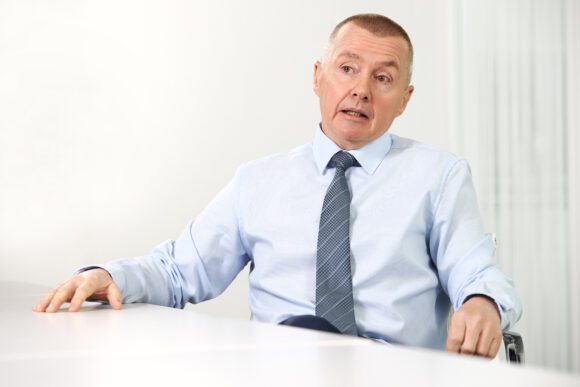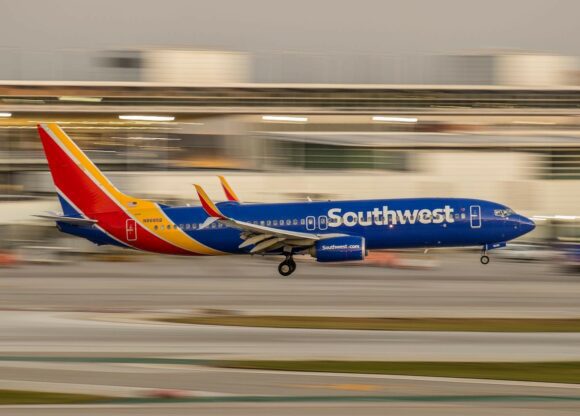
IATA is working on revised sustainability targets. The international airline association is currently preparing a proposal that will be presented at the upcoming Annual General Meeting in Boston in October, Director-General Willie Walsh said on July 8 during the second Media Day.
IATA’s current target on sustainability and carbon reduction was set in 2009. It says that by 2050, the airline industry should reduce its carbon emissions by fifty percent compared to 2005-levels. Walsh acknowledged that this target might need to be updated as the urgency of climate change is felt more.
It aligns with what was agreed in the Kyoto and Doha protocols on climate change and the more ambitious targets of the 2015 Paris Agreement. But they need to be reviewed, said Walsh: “We recognize that we need to update our targets. Our intention is to bring a proposal to our AGM in Boston between October 3-5.”
Walsh was unwilling to elaborate on the draft proposal but added: “It is critical that we are credible on the terms we can achieve. There is no point in us coming out with a target that we know can’t be delivered on. In setting a goal, we want to be able to demonstrate that there is a credible path to achieving that goal. This is not about words, this about actions from the industry.”
Some airlines might want to commit quicker to higher targets, said Sebastian Mikosz, IATA’s newly appointed Vice President for Environment and Sustainability. “But our job as IATA is to be global for the whole industry and have a target that all the industry can embrace. Therefore, 2050 is in line with the Paris Agreement seems to be credible, although it won’t stop some of our members from doing earlier.”
CORSIA key in sustainability roadmap
In the Media Day presentation, IATA outlined its sustainability roadmap which is based on conservative targets. One pillar is ICAO’s CORSIA carbon offset program which is now supported by 104 countries. In its first phase, CORSIA is only voluntary, which caused lots of criticism with environmentalist groups. Also, it doesn’t cover domestic flights, which take out a large portion of the actual emissions in countries like the US and Russia. Yet, Mikosz stressed that 77 percent of all the airline industry’s carbon dioxide is currently being offset.
IATA’s own Aviation Carbon Exchange (ACE) scheme has already traded 1.5 million tons in CO2 this year and targets 2.2 million tons by the end of 2021. “This platform is part of an eco-hub concept of products that we are developing in IATA. Actually, it is a set of products that will put decarbonization in motion. We want to take decarbonization from theory to practice and give to our airline’s tools like ACE”, said Mikosz. More updates will follow soon, he added.
KLM trialed synthetic sustainable aviation fuel in January. (KLM)
A renewed call to incentivize SAFs
The second pillar towards decarbonization has been presented before by IATA: the increased production of sustainable aviation fuels (SAF). In 2020, the consumption of SAF increased by 55 percent compared to 2019. This is expected to grow to 70 percent by the end of this year compared to 2019. Still, SAFs account for only 0.01 percent of the overall fuel consumption by the industry.
Hence the renewed call on governments and oil companies to dramatically step up production of SAFs. While some oil companies have committed to higher volumes, Walsh said the major companies still need to follow although Shell, AirBP, and Total have been producing SAFs. Governments need to incentivize producers and there need to be global mandates for the use of SAFs under competitive conditions like the two-percent mandate the European Commission is proposing.
While the industry is talking about hybrid-electric and hydrogen on an almost daily basis now, it is SAF that is the short and medium-term solution to decarbonization. Hydrogen is definitely a potential source, Walsh acknowledged, and he welcomes Airbus’ initiative to have a hydrogen airliner by 2035. But until then, credible offsetting is the solution with more sustainable fuels. “Hydrogen is something for beyond 2035.” So is carbon capture and storage, which is very much in the early stages of development.
While IATA is working on revising its sustainability targets, Mikosz added that the association takes a conservative view to new technology: “We will still need SAFs for long-haul travel.” IATA hopes that 100-percent SAFs can legally be used in the not too far distant compared to 50 percent, which is the currently restricted percentage for blending SAFs with kerosene. While SAFs will remain more expensive as long as the production is limited, once prices come slightly down airlines will be prepared to pay more, said Walsh. “We clearly will pay the price that is necessary, but we expect others to invest too and pay the price as well.”
IATA Director General Willie Walsh. (IATA)
Brussels can’t ignore Single European Sky
It’s with great anticipation that IATA is looking at the proposal on taxation of air travel that the European Commission is expected to present next week. The association repeated it is “very concerned and fundamentally against” taxation as it is a local solution to a global problem. “There is no evidence that taxes are invested back in the development of SAFs or in fleet renewal. Taxation can even delay fleet renewal”, Mikosz said.
Willie Walsh said that IATA will be very upset and annoyed if the EC proposal will not include any mentioning of the infamous Single European Sky (SES), “It’s a scandal. Europe needs to address the inefficiencies of the air traffic management system. We need politicians to step up and address these issues. This isn’t a technology issue, this is a lack of political will. It is unacceptable that the airline industry continues to pay for gross inefficiency, most through the impact of the cost on fuel and more importantly through the additional CO2 that could be avoided. (…) If SES is not addressed in the proposal, we really would have to question whether the Commission is really committed to achieving these targets. Because it can be done with existing technologies.”
Active as a journalist since 1987, with a background in newspapers, magazines, and a regional news station, Richard has been covering commercial aviation on a freelance basis since late 2016.
Richard is contributing to AirInsight since December 2018. He also writes for Airliner World, Aviation News, Piloot & Vliegtuig, and Luchtvaartnieuws Magazine. Twitter: @rschuur_aero.







